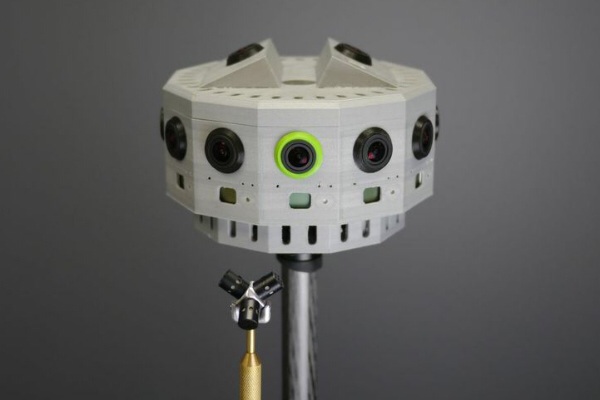
Last week, Facebook’s Mark Zuckerberg made a $2 billion dollar bet that virtual reality is going to be a big deal, by acquiring the maker of the Oculus Rift VR headset. In explaining the deal, he referenced some of the technology’s potential applications beyond gaming: spectator sports, education and medicine. And though he didn’t say anything about VR changing moviemaking, he might well have.
I recently wrote about Zero Point, a documentary about virtual reality, which is designed to be experienced as virtual reality on Oculus’s headset. It was created using a proprietary camera system that captures 360 degrees’ worth of 3D video and then stitches it altogether. Now a startup called Jaunt is talking about its own similar technology for what it calls “cinematic VR.” It plans to sell it to moviemakers in Hollywood and elsewhere who want to capture, edit and distribute movies for viewing on the Rift and other VR headsets, such as the one Sony is developing for use with the PlayStation 3.
Jaunt started experimenting with 3D VR cameras by building a tiny prototype using Lego parts. It’s moved on to more ambitious designs and now has a model–no Lego involved–with which it’s created some demo footage. The company let me sample the results at its offices, using the HD version of the Oculus Rift developer kit. The demo included several short scenes, including a horror-movie like bit set at sea, involving what seemed to be a monstrous octopus. That part had me spinning around in my seat to see the action all around me.
The company’s current hardware is a fixed camera setup, which stays in one place and captures almost everything around it, with the exception of the area directly below the cameras — basically, where your feet would be in the virtual-reality world. It also captures 3D sound, which is an important storytelling tool: In a VR movie, your ears will know there’s something going on behind you before your eyes do.
Of course, capturing 3D video and sound is only the start of the VR movie-making process. Jaunt is also developing the technology necessary to assemble raw footage into polished movies using industry-standard software such as Apple’s Final Cut Pro video editor. It’s also working on the question of how these movies will be distributed to consumers who have VR headsets–a necessary factor nobody has yet figured out.
Basically, VR movie-making is so new a concept that the company has to build an end-to-end system, a task it compares to what IMAX had to do when it was a startup. “After we starred, we realized it’s a much bigger project than we ever imagined,” says co-founder and CTO Arthur van Hoff.
Jaunt isn’t yet talking about when movies using its technology might arrive. That’s O.K. Oculus Rift and Sony’s headset aren’t yet commercial products, so it’s going to be a while before consumers will be ready to enter virtual worlds from the comfort of their own living rooms.
More Must-Reads from TIME
- Donald Trump Is TIME's 2024 Person of the Year
- Why We Chose Trump as Person of the Year
- Is Intermittent Fasting Good or Bad for You?
- The 100 Must-Read Books of 2024
- The 20 Best Christmas TV Episodes
- Column: If Optimism Feels Ridiculous Now, Try Hope
- The Future of Climate Action Is Trade Policy
- Merle Bombardieri Is Helping People Make the Baby Decision
Contact us at letters@time.com